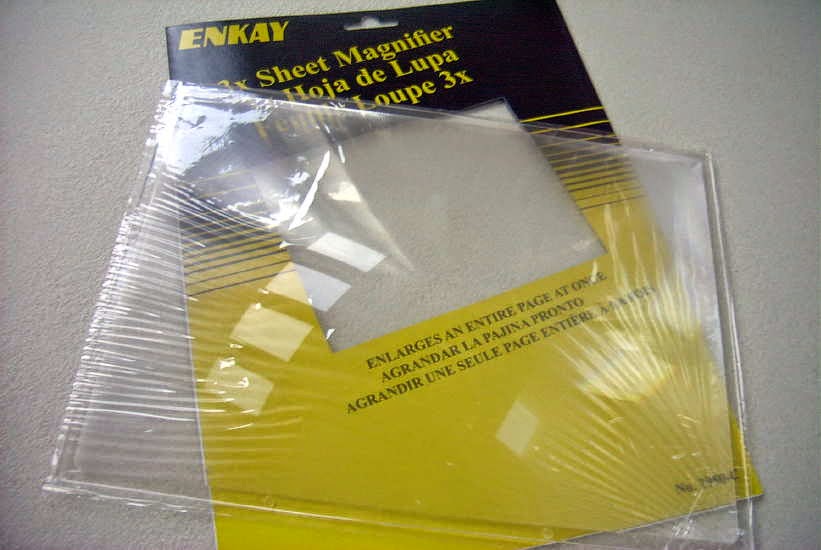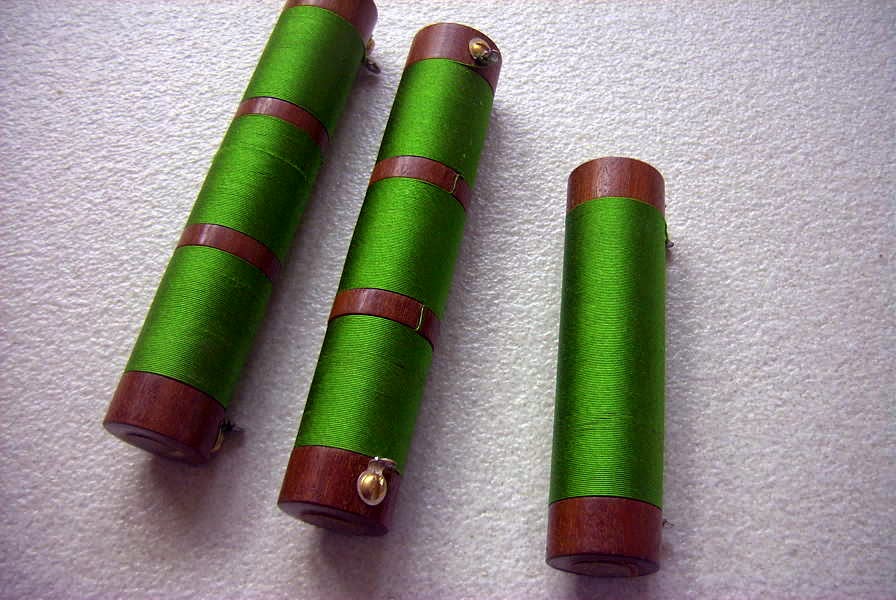Posts Tagged ‘’29 style’
 New MOPA Completed
New MOPA Completed
Well ... my new 1930's style MOPA transmitter is finally finished after several months of construction. I have also put together a page on my website describing the project.
For many years, December's high winds here on the coast, have always arrived coincidentally with the start of the annual 1929 QSO Party, making my signal dance around even more than usual! With the new MOPA, I'll no longer have to worry about high winds upsetting signal stabilty ... although many of us do enjoy hearing these musical sounds of '29!
By the way, there's still plenty of time for you also, to put something together for this annual fun event. You can see a whole page-full of inspiring '29 homebrew magic here (scroll to the bottom half) ... and there is plenty of help available for your project in the AWA Yahoo Builders Group ... we are always looking for more new activity, particularly here out west.
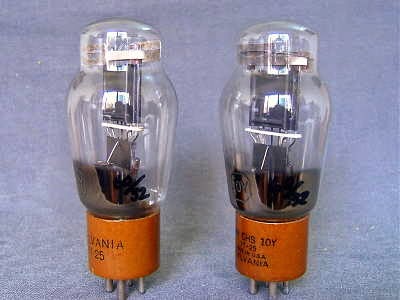 |
| courtesy: natubes.com/ |
I'm looking forward to working many of you in the next '29 QSO Party ... in the meantime, I'm thinking hard about what my next project might be!
 ’29 MOPA – Small Step
’29 MOPA – Small Step
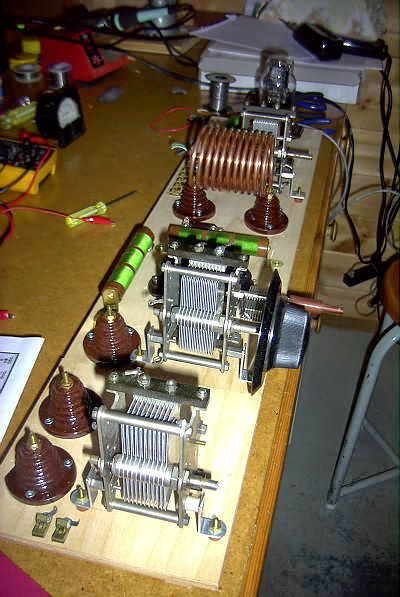 This morning I completed the wiring of the test-bed MOPA's Hartley oscillator circuit. I was using the 80m tank at the time, wound with 3/16" copper tubing. Oscillator keying is about what I expected ... stable but with some ripple on the note. Even with DC on the filaments, many of these open-breadboard oscillators suffer from RF-modulated notes. Sometime wrapping the power supply or keying leads in a ferrite toroid help or eliminate the slight rasp. On the other hand, some builders prefer to have a note that sounds more '29-like, as in all likelihood, not many notes sounded like pure DC back in the day.
This morning I completed the wiring of the test-bed MOPA's Hartley oscillator circuit. I was using the 80m tank at the time, wound with 3/16" copper tubing. Oscillator keying is about what I expected ... stable but with some ripple on the note. Even with DC on the filaments, many of these open-breadboard oscillators suffer from RF-modulated notes. Sometime wrapping the power supply or keying leads in a ferrite toroid help or eliminate the slight rasp. On the other hand, some builders prefer to have a note that sounds more '29-like, as in all likelihood, not many notes sounded like pure DC back in the day.I'm really having second thoughts about my construction method and may just jump to the next (final) construction phase rather than slog through completion of the test-bed model. I've already learned much about the layout by getting to this stage and the extra work involved in completing the test-bed model may not tell me anything new.
I'm using a VT-25 version of the somewhat pricey and hard-to-find type '10' tube. The final version will be built in a similar fashion to my Tri-Tet-Ten, on an aluminum sheet atop the breadboard. Hopefully having the groundplane and shorter leads, will lead to a cleaner note in the final version.
I'm rather dreading this next final phase as there is little room for error. The aluminum sheet must be precisely pre-drilled, as well as the breadboard, and protected at all times (especially when making soldered connections) to prevent any finger marks or scratching on the aluminum sheet. There are still several drilling details to be worked out before I can move forward.
 ’29 MOPA / NLOS Lightwave Progress
’29 MOPA / NLOS Lightwave Progress
 |
| Courtesy: http://www.arrl.org/ |
I've now completed a set of tank coils for the new'29 MOPA project. These were wound with 3/16" copper tubing which has become very difficult to source. Luckily, after much searching, I was fortunate enough to find several rolls locally at a very attractive price. Although I do see it quite often on e-bay, sellers either refuse to ship to Canada or their shipping charges are far too high to make it worthwhile. The larger 1/4" rolls are still readily available, but for any given inductance, will take up a lot more room on the breadboard if space is an issue.
These coils cover the amplifier tank, the Hartley oscillator's tank, and the antenna coupling link. Respectively, the coils measure 4.9uH, 4.0uH and 1.9uH.
Winding these is always fun but the method used requires that the needed length be predetermined and cut from the roll beforehand. The first time I did this, when building my TNT transmitter, I learned the hard way to always add at least another foot to cover the additional length eaten-up by turn-spacing and for coil end flattening and mounting.
While visiting Vancouver for a few days I was able to find a couple of pieces needed for my non-line of sight (NLOS) lightwave experiments.
I purchased a nice 4.25" magnifier lens, with suitable focal length, as well as an inexpensive page-size fresnel magnifying lens. What is particularly pleasing is that the fresnel is a rigid lens, about 2 mm thick, unlike most page magnifiers that are thin and floppy. I have yet to test its blur circle or determine its focal length.
I plan to use one or the other of these lenses in a small, portable lightwave receiver module that I can carry to the other side of the island to listen for the main large transmitter, aimed slightly above the horizon, in beacon-mode. If the smaller fresnel does the job, it will be an inexpensive source for anyone else needing a simple lens for either transmitting or receiving.
If the deep-red light tests prove successful, I'll switch the system to IR light but at this stage I'm not sure how focusing and optimizing receivers and transmitters can be done with a light source that is essentially invisible? Perhaps using an IR source that is right on the edge of deep-red will still have enough visible light to allow finding the optimum focus more easily.
More information on NLOS experiments can be found in Yahoo's Optical DX Group as well is in G3XBM' s 481thz blogs.
As well, anyone in the Vancouver lower mainland (as far as the northern Sunshine Coast area) that might be considering lightwave ... I'd love to work you! Pretty well any high spot in this region is direct LOS for me.
 ’29 MOPA Progress
’29 MOPA Progress
 |
| '29 MOPA Plan |
The choke forms were first turned on the wood lathe, using Mahogany hardwood scrap, to a diameter of 3/4", and then stepped down slightly, for the space occupied by the windings. The windings, using single silk enamel #31, were then done, still on the lathe, while rotating the spindle manually.
I've always been surprised at how little inductance is really needed for effective choking on HF and it would seem that the 'standard' 2.5mH is much more than is actually required. The single-ended version is just 190uH, while the three-section chokes measure just 240uH, about 10% of what normally might be specified today.
 1929 BK QSO Party Fun
1929 BK QSO Party Fun
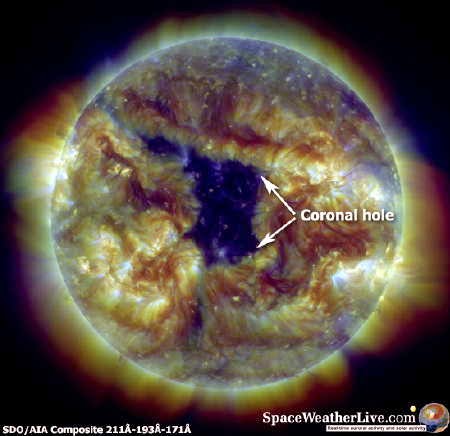 |
| Courtesy: http://www.spaceweatherlive.com |
Not to disappoint, the usual BK winds came up, right on schedule as well, almost coincidental with the start of the Party. Thankfully, weekend number two saw no wind whatsoever....a rare event in December....but, from the sound of many other notes, I wasn't the only one having windy weather.
Some of this year's highlights were working my usual "must contact" stations back east....N1BUG (Paul, in Maine), NE1S (Larry, also in Maine), VE3AWA (Lou, in Ontario), K4JYS (Bill, in NC) and WØVLZ (Niel, in MN). It's particularly fun to work Niel as it was the fine Youtube video of his 1929 station that got me started in vintage building.
Two newcomers made this affair even better, with the addition of John, VE7BDQ,along with his nice three-band Colpitts and 12-year old Joe, KC9WYV, operating at KBØROB's station in MN. He has a fist as smooth as silk and will be a wonderful asset to our hobby. Kudos to Harold for the "Elmering" of this young ham.
I made a very short recording of 40m early on the first weekend, just after the 3PM start.... but there wasn't much to hear at this early hour. On the video below you can see (and hear) the signals of (in order): K4JYS (NC) being answered by KK7UV, W7LNG (OR), WB2AWQ (Reno, NV), VE7BDQ (working WA1JAS in Maine). The 8W signal of WA1JAS is amazing, considering the hour....still daylight here on the west coast.
My BK log is rather skimpy, considering that it represents two Saturday-nights of activity. In terms of fun, it is very much larger. I rather suspect that this may have been the last outing for my Hull Hartley, as work has now begun on a MOPA rig for next year....hopefully I won't have to worry about the wind weather any longer!
Of particular interest are the rig descriptions and input power levels. I also see Hartley's having a slight-edge over TNT's in terms of usage. It was disappointing to have only 3 contacts on topband, but conditions were just not going to let it happen....maybe next year.
DE6 2302 40 KK7UV 589c 558 HART 28 9 STEVE MT
DE6 2317 40 N1BUG 568 449 TNT 29 10 PAUL ME
DE6 2322 40 WA1JAS 569 559 HART 29 8 MIKE ME
DE6 2347 40 W7LNG 567 578 TNT 29 6 BUD OR
DE6 2352 40 VE7BDQ 599 599 COLP 29 10 JOHN BC
DE7 0014 40 K7SF 578 579 TNT 29 10 STEVE OR
DE7 0105 40 NE1S 449 449 TNT 29 9 LARRY ME
DE7 0120 40 WB2AWQ 579 569 HART 29 10 HOWIE NV
DE7 0133 40 K4JYS 449 449 TNT 29 10 BILL NC
DE7 0145 40 WB8APR 559 449 MOPA 29 5 JOHN MI
DE12 2257 40 K0KP 579 559 HART 29 9 REX MN
DE6 0202 80 AB0CW 559 549 HART 29 5 MARK CO
DE6 0317 80 KK7UV 599 599 HART 28 9 STEVE MT
DE6 0329 80 KE0Z 559 559 HART 29 8 WILL SD
DE6 0356 80 N1BUG 449 559 TNT 29 10 PAUL ME
DE6 0403 80 KC9WYV 579 539 MOPA 29 9 JOE MN
DE6 0415 80 VE7BDQ 599 599 COLP 29 10 JOHN BC
DE6 0422 80 AA2YV 439 449 HART 29 10 BILL NY
DE6 0438 80 N8YE 559 569 TPTG 25 9 STEVE OH
DE6 0442 80 W7LNG 578 588 TNT 29 9 BUD OR
DE6 0524 80 K0KP 599 589 HART 29 9 REX MN
DE6 0530 80 W2ICE/0 579 339 COLP 29 10 SCOTT MN
DE6 0539 80 VE3AWA 578 339 TNT 29 10 LOU ON
DE6 0548 80 KI0DB 559 579 MOPA 29 10 MARK MN
DE6 1229 80 W0LGU 559 559 MOPA 29 9 TOM MN
DE6 1240 80 K0KCY 559 449 MOPA 29 10 TONY MN
DE12 0352 80 KB0ROB 569 569 MOPA 29 9 HAROLD MN
DE12 0427 80 W8KGI 559 448 MOPA 29 10 JIM NM
DE12 0440 80 W0VLZ 559 339 TNT 29 10 NIEL MN
DE12 0509 80 K4JYS 559 559 HART 29 15 BILL NC
DE12 0512 80 WB9WHG 569 449 MOPA 29 20 DAVE WI
DE12 0524 80 W0LS 599 579 HART 29 9 HARRY MN
DE12 0401 160 KK7UV 579 559 HART 28 10 STEVE MT
DE12 0539 160 VE7BDQ 599 599 COLP 29 10 JOHN BC
DE12 0542 160 W0LS 559 559 HART 29 9 HARRY
DE6 2317 40 N1BUG 568 449 TNT 29 10 PAUL ME
DE6 2322 40 WA1JAS 569 559 HART 29 8 MIKE ME
DE6 2347 40 W7LNG 567 578 TNT 29 6 BUD OR
DE6 2352 40 VE7BDQ 599 599 COLP 29 10 JOHN BC
DE7 0014 40 K7SF 578 579 TNT 29 10 STEVE OR
DE7 0105 40 NE1S 449 449 TNT 29 9 LARRY ME
DE7 0120 40 WB2AWQ 579 569 HART 29 10 HOWIE NV
DE7 0133 40 K4JYS 449 449 TNT 29 10 BILL NC
DE7 0145 40 WB8APR 559 449 MOPA 29 5 JOHN MI
DE12 2257 40 K0KP 579 559 HART 29 9 REX MN
DE6 0202 80 AB0CW 559 549 HART 29 5 MARK CO
DE6 0317 80 KK7UV 599 599 HART 28 9 STEVE MT
DE6 0329 80 KE0Z 559 559 HART 29 8 WILL SD
DE6 0356 80 N1BUG 449 559 TNT 29 10 PAUL ME
DE6 0403 80 KC9WYV 579 539 MOPA 29 9 JOE MN
DE6 0415 80 VE7BDQ 599 599 COLP 29 10 JOHN BC
DE6 0422 80 AA2YV 439 449 HART 29 10 BILL NY
DE6 0438 80 N8YE 559 569 TPTG 25 9 STEVE OH
DE6 0442 80 W7LNG 578 588 TNT 29 9 BUD OR
DE6 0524 80 K0KP 599 589 HART 29 9 REX MN
DE6 0530 80 W2ICE/0 579 339 COLP 29 10 SCOTT MN
DE6 0539 80 VE3AWA 578 339 TNT 29 10 LOU ON
DE6 0548 80 KI0DB 559 579 MOPA 29 10 MARK MN
DE6 1229 80 W0LGU 559 559 MOPA 29 9 TOM MN
DE6 1240 80 K0KCY 559 449 MOPA 29 10 TONY MN
DE12 0352 80 KB0ROB 569 569 MOPA 29 9 HAROLD MN
DE12 0427 80 W8KGI 559 448 MOPA 29 10 JIM NM
DE12 0440 80 W0VLZ 559 339 TNT 29 10 NIEL MN
DE12 0509 80 K4JYS 559 559 HART 29 15 BILL NC
DE12 0512 80 WB9WHG 569 449 MOPA 29 20 DAVE WI
DE12 0524 80 W0LS 599 579 HART 29 9 HARRY MN
DE12 0401 160 KK7UV 579 559 HART 28 10 STEVE MT
DE12 0539 160 VE7BDQ 599 599 COLP 29 10 JOHN BC
DE12 0542 160 W0LS 559 559 HART 29 9 HARRY
More information on '29 building may be found here in previous "'29-style blogs" and good project discussions always abound at the Yahoo "AWA Group" builder's site.
It's really not too early to start building for next year's BK!
 The Importance of 1929 – Part 4
The Importance of 1929 – Part 4
 |
| QST Feb 1931 Courtesy: http://www.arrl.org/ |
For North American hams, many of these had already been in place, but for much of the DX, this was all new.
Some of the more important changes are ones that we have come to recognize as "everyday practice" for the past several decades.
Like our friend below, and for all new amateurs worldwide, mastering CW would now be mandatory.
 |
| Courtesy: http://www.arrl.org/ |
" Article {6} (3) ...any person operating the apparatus...must have proved his ability to transmit passages in the Morse Code and to read...passages thus transmitted."
Licencing was also mandated.
" Article {2} (1) No radioelectric sending station shall be established or worked by a ...person...without a special licence issued by the Government..."
And hams would need to earn their tickets.
 |
| Courtesy: http://www.arrl.org/ |
Article 6 (4) Administrations...take such measures to verify the qualifications, from the technical point of view, of all persons operating the apparatus."
No longer would hams have the luxury of making up their own call signs, although not an issue in North America since the end of WW1. All calls would now be assigned by the government.
"Article {14} (13) ...private experimental stations must have a call sign taken from the international series assigned to each country."
 |
| Courtesy: http://www.steveirwinstamps.co.uk |
 |
| Courtesy: http://hamgallery.com |
No longer would hams be identified by the old style of call letters such as 'NU9AVZ' in the U.S., or as 'C5AU' in Canada. Country codes were changed internationally and U.S. hams became W's, K's and N's, as did commercial stations. Canadian hams became VE's, with both countries divided into numbered call-districts. This change was made several months before the end of 1928, well ahead of compliance.
The system of Q signals, as we know them today, were to be implemented for all users, both commercial and amateur. As noted in the September, 1928 QST, the signal for "QST" had been removed.
"The prefix for a general call to all stations has been changed from "QST" to "CQ" and the former is now blank in the international list of "Q" signals. That doesn't mean that QST is going to change its name though. If some uncomplimentary meaning has been assigned the letters "QST", such as "You interfere with me -- get out," we might have to." [QST September, 1928]
And no, the list did not include "QLF".
Although chiefly aimed at the commercial ops working mobile stations, such as maritime or aeronautical traffic, many of these new operating procedures filtered-down to amateurs very quickly and are still used today:
" Article {9} (6) When a station is uncertain of the call sign of the station calling...reply...using the signal .. _ _ .. "
" Article {9} (7-1) When it is necessary to make test signals...such signals...must be composed by a series of V's followed by the call letters of the station working. "
" Article {9} (3-1a) The station calling makes the call...not more than three times...and the word DE, followed...by its own call sign. "
" Article {9} (3-3) If the station called is not ready...it replaces the letter K by the signal . _ ... (wait)... "
 |
| Courtesy: http://www.arrl.org/ |
" Article {9} (3-9a) The transmission...is terminated by the signal . _ . _ . (end of transmission)... "
" Article {9} (10a) The acknowledgement of receipt...is given by the means of the letter R."
" Article {9} (11) The end of work between two stations is indicated by each of them, by means of the signal ... _ . _ "
" Article {10} (1-1) Stations desiring to enter into communications...may use the signal of inquiry CQ...followed by the letter K... "
Although they had already been operating from Washington, DC, on a limited schedule, Jan 1st, 1929, marked the expansion of WWV, which began a regular schedule, cycling through 40 different precise frequencies during a two-hour period. All transmissions were in CW. This would allow for all users, worldwide, to calibrate their receiving equipment to 1929 standards.
Compiled in November 1928, the January 1929 edition of QST carried these last hopeful words before the big day arrived:
"January 1st, 1929, magic date, is upon us...the dividing line between the old and the new in amateur radio...when we look back...we are going to wonder how we ever got along in 1927 and 1928 with those crude methods which we once employed...It is the duty of every amateur to prepare himself for the new life which exists on the other side of January 1st." [QST January, 1929]
The following month's editorial described the early days of 1929 activity and was somewhat surprsing, considering all of the hard work that had gone into preparing radio amateurs for the new era.
 |
| Courtesy: http://www.arrl.org/ |
And so, finally, the long anticipated day came and went, but it seemed the ARRL's task was far from over. Not everyone had gotten the message or, at least, the entire message. VE4GU was all prepared for 1929 with new QSL's for his Jan 22, 1929 QSO with W9DYV on 40m CW but apparently missed the 'other' announcement...his card reports using '500V' of raw AC on his 210 Hartley!
 |
| Courtesy: http://www.arrl.org/ |
Without question our cherished hobby was shaped forever by those well-considered pronouncements and the timely leadership of the ARRL during those tumultuous days, so long ago. We owe them a lot.
And for those who have asked...that...is the reason why, once every year, we light-up our old 210's and celebrate the boys of '29.
 The Importance of 1929 – Part 3
The Importance of 1929 – Part 3
 |
| Drum Dial Rx Tuning Courtesy: http://www.arrl.org/ |
As the leader of the ARRL's Technical Development Program and its assault on 1929 preparedness, Hull continued his relentless pace of construction and publication in the November 1928 issue of QST...turning now to receivers. The detailed article analyzed three receivers of varying complexity to see how they might fare in the busy "international bands" of 1929...and where improvements might be gleaned.
In "High-Frequency Receivers for the Coming Year / Incorporating Thoroughly Practical and Satisfying Selectivity, Open Scales, and a New Ease in Handling", editors proudly announced that,
"...practical selectivity for 1929 has been secured; it is within the reach of every amateur." [QST November, 1928]
 |
| QST Oct '28 Courtesy: http://www.arrl.org/ |
Another equally important issue was addressed in QST's October 1928 edition, once again by Ross Hull.
"In view of the present off-band operation, it is not surprising that amateurs have been wondering how it will be possible for them to stay within the relatively narrow confines of the 1929 bands and to know definitely and at all times that the frequency of their transmitters is legal." [QST October, 1928]
"The Frequency Measurement Problem / Applications of the Monitor in Transmitter Setting and Signal Checking" described, in exacting detail, the construction and calibration of a combined monitor and frequency meter that would fulfill the new rules regarding frequency allocations...but only if hams used them regularly.
 |
| QST Sept '28 Courtesy: http://www.arrl.org/ |
With the ARRL's reliance on QST's significant advertising revenue as a major source of income, the urgent 'need' to rebuild was not overlooked by the ad-men, as more building would mean that more parts had to be purchased. A skeptic might even suggest that the possibility of increased advertising revenue may have been just as much of a driving-force for the need of new construction than the new rules themselves!
 |
| QST 1929 Courtesy: http://www.arrl.org/ |
Advertisers in QST were not shy about reminding amateurs of the coming deadline as well as promising easy solutions to compliance.
In early 1928, QST published several of the Convention articles that would apply to amateurs. Chief amongst them were the frequency allocations. North American amateurs lost about 40% of the spectrum space that they had previously enjoyed but...the harmonically-related bands, although slimmed-down, were retained along with exclusive access to the new and largely unwanted territory of 28-30mc.
Many amateurs at the time complained about the loss of older frequencies and that the League representatives had dropped the ball. In light of the times, and in view of the commercial feeding-frenzy for new broadcasting allotments, they fared very well.
 |
| 1929 Band Plan - QST Jan '28 Courtesy: http://www.arrl.org/ |
But it wasn't just frequency assignments that were changing...1929 operators would need to change their crummy old operating habits as well! ....(cont'd)



